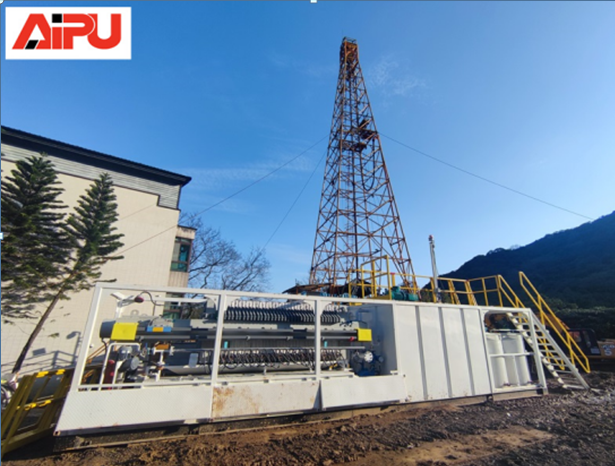Revolutionizing Oil Drilling with New - Age Equipment
Solids control equipment is crucial in various industries, especially in oil and gas drilling. Advanced vibration technology has emerged as a game - changer in enhancing the efficiency and performance of such equipment. This article delves into the details of this technology and its impact on solids control.
Principle of Advanced Vibration Technology
The foundation of advanced vibration technology in solids control equipment lies in the precise generation and control of vibrations. These vibrations are designed to separate solids from liquids more effectively. By adjusting the frequency, amplitude, and direction of the vibrations, the equipment can adapt to different types of drilling fluids and solids mixtures. For example, high - frequency vibrations can be used to break up agglomerated solids, while low - frequency vibrations can help in the transportation of separated solids along the screen surface. This flexibility allows for a more customized and efficient separation process.
Benefits in Solids Separation
One of the primary benefits of advanced vibration technology is improved solids separation efficiency. It can significantly reduce the amount of fine solids remaining in the drilling fluid, which is essential for maintaining the quality of the fluid. Cleaner drilling fluid leads to better lubrication, reduced wear and tear on drilling equipment, and enhanced overall drilling performance. Additionally, this technology can increase the throughput of solids control equipment. By optimizing the vibration parameters, more drilling fluid can be processed in a shorter time, improving the productivity of the entire operation.
Enhanced Equipment Durability
Advanced vibration technology also contributes to the durability of solids control equipment. The precise control of vibrations reduces the stress on the equipment components. For instance, the screens in shale shakers, a key part of solids control equipment, are subjected to less wear and tear when the vibrations are well - regulated. This not only extends the lifespan of the equipment but also reduces maintenance costs. Moreover, the stable and controlled vibrations prevent premature failure of other mechanical parts, ensuring the long - term reliability of the solids control system.
Industry Applications and Future Trends
Advanced vibration technology in solids control equipment has found wide applications in the oil and gas industry, as well as in mining and construction. In the oil and gas sector, it is used in on - shore and off - shore drilling operations to manage drilling waste and maintain fluid quality. Looking ahead, the future of this technology is promising. There will likely be further improvements in vibration control algorithms, allowing for even more precise and adaptive separation processes. Integration with other advanced technologies, such as automation and artificial intelligence, may also lead to more intelligent solids control systems that can self - adjust based on real - time data.

Principle of Advanced Vibration Technology
The foundation of advanced vibration technology in solids control equipment lies in the precise generation and control of vibrations. These vibrations are designed to separate solids from liquids more effectively. By adjusting the frequency, amplitude, and direction of the vibrations, the equipment can adapt to different types of drilling fluids and solids mixtures. For example, high - frequency vibrations can be used to break up agglomerated solids, while low - frequency vibrations can help in the transportation of separated solids along the screen surface. This flexibility allows for a more customized and efficient separation process.
Benefits in Solids Separation
One of the primary benefits of advanced vibration technology is improved solids separation efficiency. It can significantly reduce the amount of fine solids remaining in the drilling fluid, which is essential for maintaining the quality of the fluid. Cleaner drilling fluid leads to better lubrication, reduced wear and tear on drilling equipment, and enhanced overall drilling performance. Additionally, this technology can increase the throughput of solids control equipment. By optimizing the vibration parameters, more drilling fluid can be processed in a shorter time, improving the productivity of the entire operation.
Enhanced Equipment Durability
Advanced vibration technology also contributes to the durability of solids control equipment. The precise control of vibrations reduces the stress on the equipment components. For instance, the screens in shale shakers, a key part of solids control equipment, are subjected to less wear and tear when the vibrations are well - regulated. This not only extends the lifespan of the equipment but also reduces maintenance costs. Moreover, the stable and controlled vibrations prevent premature failure of other mechanical parts, ensuring the long - term reliability of the solids control system.
Industry Applications and Future Trends
Advanced vibration technology in solids control equipment has found wide applications in the oil and gas industry, as well as in mining and construction. In the oil and gas sector, it is used in on - shore and off - shore drilling operations to manage drilling waste and maintain fluid quality. Looking ahead, the future of this technology is promising. There will likely be further improvements in vibration control algorithms, allowing for even more precise and adaptive separation processes. Integration with other advanced technologies, such as automation and artificial intelligence, may also lead to more intelligent solids control systems that can self - adjust based on real - time data.








